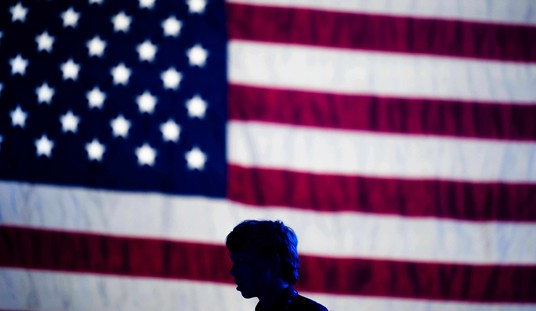Brian Stelter was on CNN yesterday to make the case that the Trump administration was giving access to mostly favorable media like Breitbart and the Washington Times in order to gain more favorable coverage. “We’ve seen this administration stacking the deck with friendlier news outlets,” Stelter said. “What I mean are news outlets that have a point of view. In some cases they’re openly rooting for the president,” he continued. “We don’t see CNN or the NY Times rooting for any president, whether a Democrat or Republican,” Stelter said.
Granted, Breitbart has been obviously pro-Trump for the past year and a half and the Washington Times leans to the right. I wouldn’t argue Stelter on either point. But the idea that the NY Times and CNN are above having a point of view is ludicrous. To start with, the NY Times editorial board endorsed Hillary Clinton last September. Here’s how that endorsement opened:
In any normal election year, we’d compare the two presidential candidates side by side on the issues. But this is not a normal election year. A comparison like that would be an empty exercise in a race where one candidate — our choice, Hillary Clinton — has a record of service and a raft of pragmatic ideas, and the other, Donald Trump, discloses nothing concrete about himself or his plans while promising the moon and offering the stars on layaway.
That certainly sounds like an organization that is rooting for one candidate over the other. Before last year the Times endorsed Barack Obama twice and before that it endorsed John Kerry (both in the general election and the primary). So the idea that the paper doesn’t root for candidates seems a bit misplaced.
And it’s not just the editorial pages where the NY Times favors one side over the other. In December, NY Times public editor Liz Spayd appeared on Fox News and agreed that some NY Times reporters had gone over the line in criticism of Trump. She later clarified but did not retract that criticism. This followed a column she wrote for the paper last November in which she indicated that she was hearing frustration and dismay from many readers, including those on the left, who were tired of the paper’s predictable bias:
What struck me most as I spoke with readers is how much, to a person, they had something to say that was smart and reasonable. They weren’t randomly selected — I chose them from an inbox of complaints — but they had reactions that were well worth hearing. I found myself wishing someone from the newsroom was on the line with me, especially to hear how many of the more liberal voters wanted more balanced coverage. Not an echo chamber of liberal intellectualism, but an honest reflection of reality.
That column followed a previous one in July 2016 when Spayd wrote that she was hearing from liberal readers who were tired of the paper’s bias:
One reader from California who asked not to be named believes Times reporters and editors are trying to sway public opinion toward their own beliefs. “I never thought I’d see the day when I, as a liberal, would start getting so frustrated with the one-sided reporting that I would start hopping over to the Fox News webpage to read an article and get the rest of the story that the NYT refused to publish,” she says.
Here’s frustration as it crests, from James, an Arizona reader: “You’ve lost a subscriber because of your relentless bias against Trump — and I’m not even a Republican.”
Spayd went on to point to the imbalance among comments left on NY Times articles which matched with a Pew poll showing, “65 percent of its readers possessing political values that were left of center.” Why are 2/3 of NY Times readers liberal? Because they have sought a source that reflects their own views. And that connection between liberal readers and liberal slant was admitted back to 2013 by the NY Times’ previous public editor Margaret Sullivan. Appearing on CNN, Sullivan said the paper reflected its liberal, urban readers (video here):
Sullivan: I mean that is obviously something people feel about The Times, and I think maybe the best way to think about it is that The Times reflects its readership, its community. It’s an urban paper; it’s a New York City paper. I mean that’s a reasonable criticism, I think.
Lipman: So it is a yes?
Sullivan: It’s a modified yes with a lot of nuance in it.
I could keep going. Here’s outgoing public editor Arthur Brisbane in 2012:
I also noted two years ago that I had taken up the public editor duties believing “there is no conspiracy” and that The Times’s output was too vast and complex to be dictated by any Wizard of Oz-like individual or cabal. I still believe that, but also see that the hive on Eighth Avenue is powerfully shaped by a culture of like minds — a phenomenon, I believe, that is more easily recognized from without than from within.
When The Times covers a national presidential campaign, I have found that the lead editors and reporters are disciplined about enforcing fairness and balance, and usually succeed in doing so. Across the paper’s many departments, though, so many share a kind of political and cultural progressivism — for lack of a better term — that this worldview virtually bleeds through the fabric of The Times.
As a result, developments like the Occupy movement and gay marriage seem almost to erupt in The Times, overloved and undermanaged, more like causes than news subjects.
Perhaps the simplest statement is this one from NY Times public editor Daniel Okrent back in 2004. Under the headline “Is the NY Times a liberal newspaper?” Okrent’s first line was “Of course it is.” He went on to say, “These are the social issues: gay rights, gun control, abortion and environmental regulation, among others. And if you think The Times plays it down the middle on any of them, you’ve been reading the paper with your eyes closed.”
Maybe Stelter has been reading the NY Times with his eyes closed because the idea that it doesn’t root for or against parties or candidates is not really an open question. If Stelter wants to say this is about getting the biggest news outlets in the room (as he does later in the interview), that’s one thing. But claiming the outlets that were excluded have no rooting interest is not a factual position. In fact, it speaks to CNN’s own bias problem that it can’t admit what a long series of the NY Times’ public editors have said is true.








Join the conversation as a VIP Member